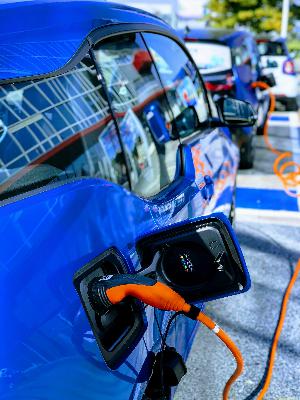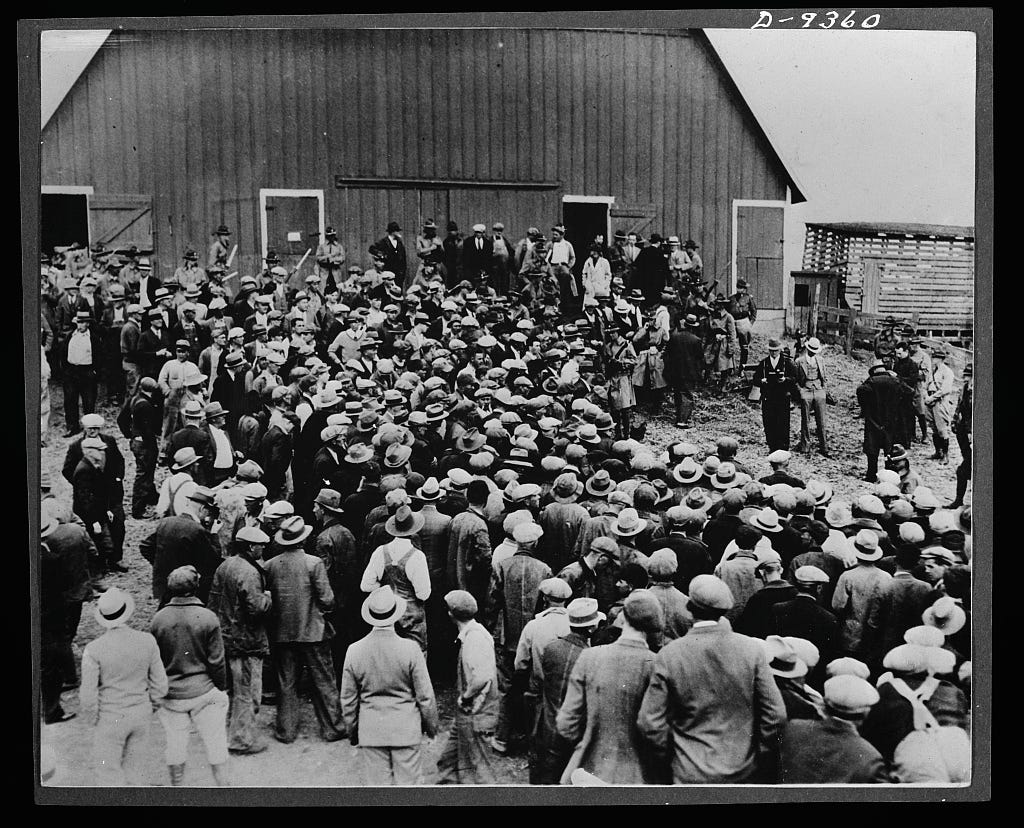Are We Designing Our Tools to Fail on Purpose?
Description
Our neighbors say they love their EVs. We take a test drive. They’re quick. They’re quiet. They’re fun!
Then the facts elbow in. EVs were sold as being cheaper, but in America, they aren’t. Many lose value fast. Some models shed close to half their value in a year. Sales have flattened. They’ll likely spike before the federal credit expires September 30, then sag after.
Some of us want to love EVs, but something isn’t quite right.
Is it the range, shorter in winter, the waits at chargers, or that stations aren’t where we need them?
Maybe none of those. Maybe the cars are designed to be replaced, not to last.
So our question:
Is this new tech built for my life, or for the next sale?
Curtain. Scene One. The 1,000-Hour Lightbulb.
Close your eyes and step onto a city street in the late 1920s. Windows glow like jewels. Streetcars hum. Night is no longer darkness. By 1930, nearly nine in ten urban and nonfarm rural homes had electricity. About one in ten farms did. Light is not a luxury. It is the texture of modern life.
Enter stage left.
At first, bulbs lasted a long time. Early tungsten lamps often burned well past fifteen hundred hours, many to two thousand and beyond. Families loved that. Companies that had built factories did not. In Germany, Osram’s sales fell from sixty three million bulbs in fiscal year 1922 to 1923 to twenty eight million the next year.
On December 23, 1924, the leading manufacturers met in Geneva to form what we now call the Phoebus cartel. Osram, Philips, Compagnie des Lampes, and General Electric’s overseas network joined. Its global reach was unusual for the time. By early 1925, they set a benchmark of a one thousand hour life for household bulbs, down from the fifteen hundred to two thousand hours common before. Shorter than families expected, and exactly what manufacturers needed.
This was not sloppy work. It was engineering with a new purpose. Each factory shipped samples to a central laboratory in Switzerland. Technicians tested life spans against the benchmark. A company paid a fine if a bulb lasted too short or too long for its class. Reliability became real, but a different kind of real. It was no longer ‘this bulb will endure.’
It was equipment that reliably failed on schedule.
Consumers adjusted fast. Every brand converged near one thousand hours. Burnout stopped feeling like a defect and started feeling like life. A 1927 Tokyo Electric memo to the cartel reported a fivefold jump in sales. More failures meant more purchases. The cartel redesigned the market not with a breakthrough that gave people more, but with a standard that made sure they would buy again soon.
At the same time, the manufacturers claimed progress. They said shorter life meant brighter light and better efficiency. At a higher cost. The new standard raised turnover and margins and punished any member tempted to make a bulb that lasted too long.
Companies got paid for replacements. They were not just selling a lightbulb. They were selling this lightbulb and all your next lightbulbs on a schedule.
The world has limits. The cartel did not last. Patents expired. Members fought. World War II shattered coordination. In the United States, courts scrutinized General Electric and its partners for collusive control of the lamp business. In 1949, a federal district court found that General Electric monopolized the incandescent lamp industry in violation of section 2 of the Sherman Act.
A tool’s death isn’t a breakdown. It’s the quiet moment it stops serving your life. The market plans what you will buy next. Some call that progress.
We, the People, need governance to stop failure by design.
When we set standards, we should ask: Is this new tech built for my life, or for the next sale?
Humanity, Existence, and Time
We miss what being is because we forget time.
Life is not a thing on a shelf. It moves. Picture a clearing in a green mountain forest. We step in already involved, tools in hand, neighbors around, choices pressing in. Our kind of life is being-there. We show up to a world that already matters.
Meaning comes through time. Past, present, and future braid every moment. We carry what has been, deal with what is, and anticipate what could be. A rancher does not just cut hay; they remember last year’s rain, read today’s moisture, and watch the three-day forecast. Time makes the work make sense because time sets the limits.
The hard edge of time is death. Not only ours. Tools die too. Death frames our choices. Faced clearly, it does not make life grim; it makes it ours. It calls us to live with purpose.
In that clearing, a tool “lives” when it disappears into the work. It “dies” when it fails our project and forces itself into attention. Philosophy calls the first ready-to-hand; the second is an object in the way.
A tool is alive for us only while it supports our next possibilities. It may not die in a crash. It dies when it stops supporting our lives. Some would schedule that death and call it progress. That is why we need rules that resist quiet, coordinated failure.
In tech, death is not when the device stops working; it is when it stops working for you. So, what does this philosophical lens reveal about our devices today?
Curtain. Scene Two. Apple and Failing Batteries
Winter 2017. Your phone feels slower. Not creek-dropped slow, just sticky. Screens load like they are pulling a sled. Benchmarks confirm what our thumbs already know. Older iPhones with worn batteries run below design speed and perk up after a battery swap. A developer posts the charts. The story catches fire.
Enter stage right.
Earlier that year, Apple pushed a software update that changed how the phone handled power. When a battery aged, or when cold or a low charge cut peak power, the system quietly managed performance to prevent sudden shutoffs. No pop-up. No heads-up. A rule under the hood to smooth over an old battery’s limits. Later, Apple explained the machinery and added a setting so the user could see it and choose to turn it off or replace the battery.
One version of the story called this protection. Better a slower phone than a dead one in your pocket. Another said it felt like a schedule, set without consent, that made aging devices feel obsolete. Apple apologized, cut the out-of-warranty battery price from 79 dollars to 29 for 2018, and promised more transparency. They added battery-health readouts and a switch to disable the slowdown.
Regulators and courts weighed in. In France, consumer authorities fined Apple 25 million euros for failing to inform users that a software update could reduce performance. In the United States, 34 states reached a 113 million dollar settlement over alleged misrepresentations about batteries and slowdowns (without admitting wrongdoing). A federal class action settled for up to 500 million dollars on related claims (again, without admitting wrongdoing).
This is not an attack on Apple. Here is what matters for our piece.
A battery is mortal chemistry. In the cold, it cannot deliver the same peak power. With age, it cannot hold the same charge. The software’s job was to stretch usefulness. Keep the tool “alive” for your day by preventing blackouts.
But the choice was hidden. People felt like their tools were dying because they no longer supported the day’s work. Only after the controversy did Apple present the controls and the explanation. Starting in 2018, Apple and its customers quietly renegotiated the tool’s life.
A tool dies when it stops serving you. We need governance to stop failure by design. When choices a
























